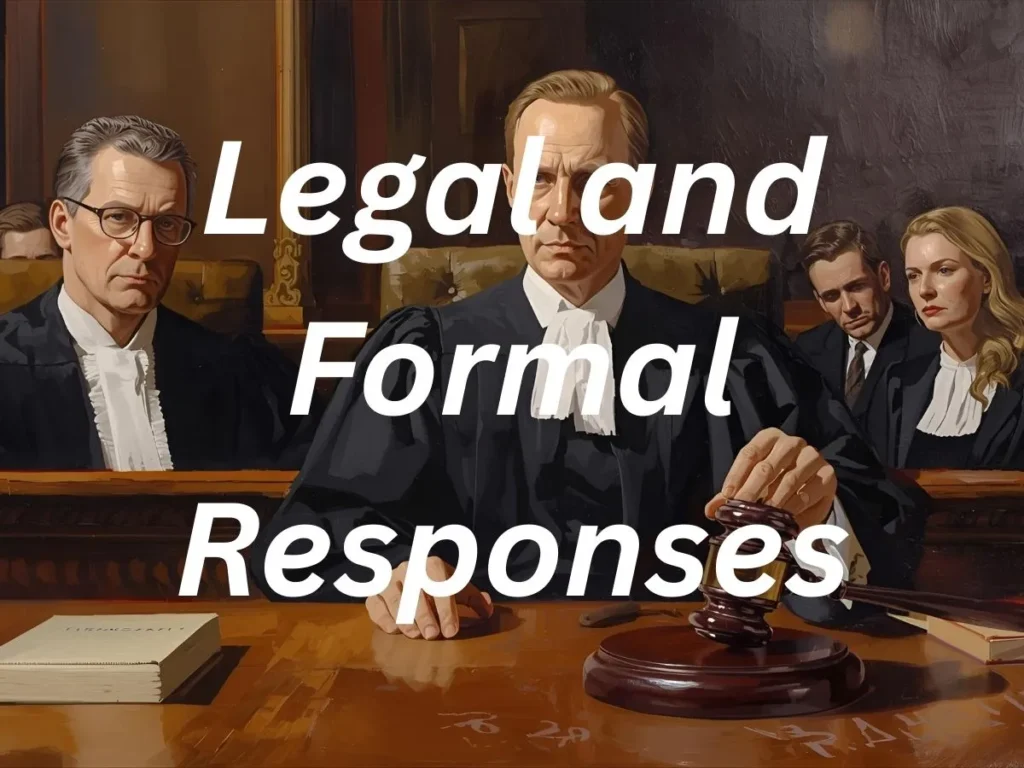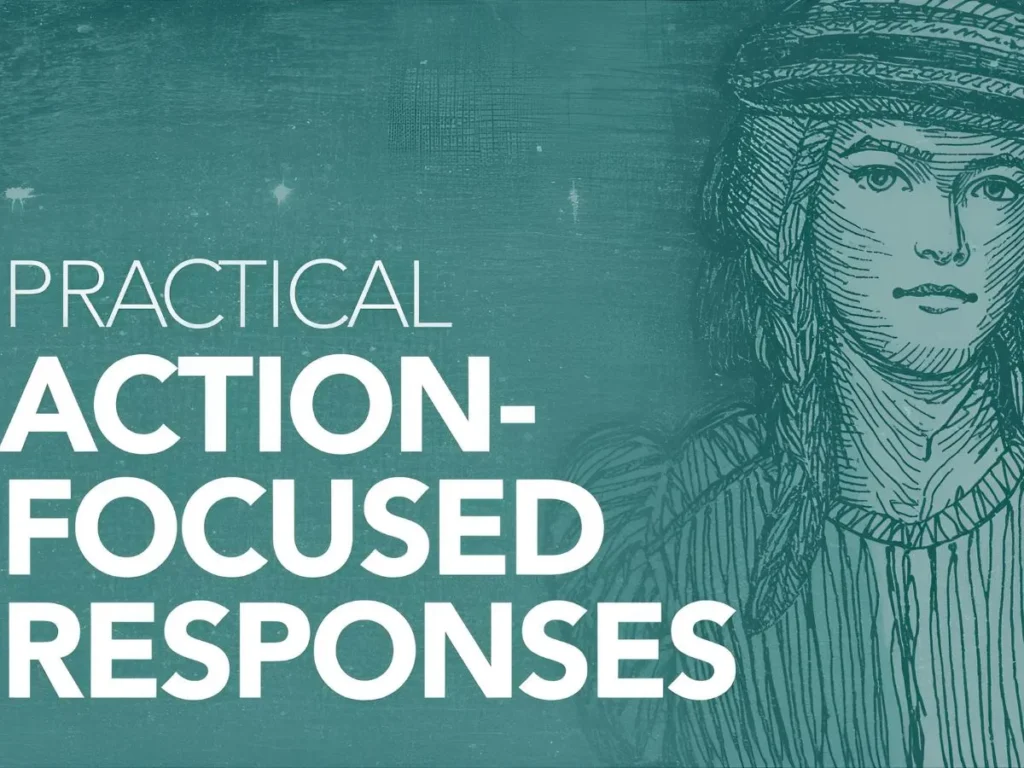Facing a restraining order can feel overwhelming, but knowing how to respond makes the process less stressful.
The right words and actions matter, especially when dealing with something this serious.
Below are 220 different ways to say how to respond to a restraining order, broken into simple and friendly options.
Legal and Formal Responses

- File a written reply with the court
- Submit your side of the story legally
- Respond by completing the official forms
- Provide documentation to defend yourself
- Write a clear response statement
- Send your answer through your lawyer
- Acknowledge receipt and prepare a reply
- File a counter-response to the petition
- Comply with all required deadlines
- Answer using the correct legal documents
- State your defense in writing
- Submit evidence with your reply
- Request a copy of the petitioner’s claims
- Challenge false claims with documents
- Give your testimony in a formal response
- Use the court system to answer
- File your answer before the deadline
- Present your legal explanation in writing
- Keep your response professional and factual
- Let the judge know your side clearly
Read More:150+How to Respond to Being Called Good Girl
Respectful and Polite Responses
- Respond calmly without anger
- Show respect in your answer
- Reply with dignity and patience
- Keep your words kind and professional
- Acknowledge the order without hostility
- Speak truthfully but respectfully
- Reply without harsh language
- Stay polite in your response
- Focus on facts instead of emotions
- Use gentle wording in your reply
- Show maturity in how you respond
- Be mindful of tone in your answer
- Keep your response respectful to all
- Speak in a composed manner
- Address the issue without personal attacks
- Reply in a non-confrontational way
- Show responsibility in your words
- Respond politely through the court system
- Stay calm and measured when answering
- Show that you are cooperative
Read More:533+How to Respond to Hey Sexy 2025
Practical and Action-Focused Responses

- Contact your lawyer immediately
- Follow the court’s instructions
- Gather evidence for your defense
- Collect supporting witnesses
- Prepare a timeline of events
- File paperwork on time
- Show up to all hearings
- Keep a record of communication
- Provide documents that support your case
- Ask for a copy of the restraining order
- Check the conditions carefully
- Avoid violating the order
- Request modifications if needed
- Prepare your defense strategy
- Respond through proper legal channels
- Double-check all deadlines
- Follow the steps listed in the order
- Make a clear plan of response
- Ensure your reply is legally sound
- Ask questions if confused
Read More:150+How to Respond When Someone Calls You a Baddie
Protective and Safety Responses
- Keep yourself safe during the process
- Avoid any contact with the other party
- Respect all restrictions immediately
- Do not attempt to confront anyone
- Stay away from restricted areas
- Follow distance rules strictly
- Take the order seriously from the start
- Do not risk violating the order
- Comply with all safety instructions
- Use legal paths to challenge the order
- Document your actions for safety
- Seek safe housing if needed
- Keep communication records for protection
- Follow police guidance if asked
- Use only official ways to respond
- Ensure you are safe while replying
- Stay within the boundaries set by law
- Avoid arguments or conflicts
- Protect your rights by responding properly
- Make safety your first priority
Cooperative Responses

- Work with your lawyer to respond
- Cooperate with the court fully
- Listen to the judge’s instructions
- Show willingness to comply
- Answer honestly when questioned
- Provide requested documents quickly
- Respect the process as it unfolds
- Participate in hearings without delay
- Show that you understand the order
- Agree to temporary conditions if needed
- Demonstrate cooperation through action
- Be open to negotiation if possible
- Respect everyone involved in the case
- Keep communication clear and fair
- Show responsibility in your behavior
- Let the judge see your cooperation
- Follow all court dates strictly
- Agree to terms while presenting your side
- Act responsibly at all times
- Demonstrate good faith in your response
Calm and Composed Responses
- Stay level-headed while replying
- Keep emotions under control
- Take time to think before responding
- Avoid rushing into an answer
- Stay grounded during hearings
- Remain steady in your words
- Answer with confidence and calm
- Keep your cool under pressure
- Think before you speak in court
- Show calmness in your behavior
- Respond without raising your voice
- Breathe deeply before answering
- Avoid panic in your response
- Stay collected in stressful moments
- Answer with a clear head
- Do not let fear control your words
- Keep stress out of your reply
- Present yourself calmly and firmly
- Maintain steady body language
- Show composure throughout the process
Professional Responses
- Hire an attorney for advice
- Get legal aid if needed
- Follow all professional guidance
- Respond with proper legal language
- Keep your paperwork neat and complete
- Use formal wording in your reply
- Respect deadlines like a professional
- Be organized in your response
- Seek advice from legal experts
- File documents with accuracy
- Present your case in a clear manner
- Show seriousness through preparation
- Work closely with legal professionals
- Keep copies of all responses
- Respect the system’s process
- Respond as a responsible adult
- Ensure everything is documented
- Stay professional in tone and action
- Use proper channels for communication
- Seek clarity from your lawyer
Strategic Responses
- Plan your defense carefully
- Gather evidence step by step
- Anticipate the other party’s claims
- Prepare answers to possible questions
- Build a strong legal case
- Make your arguments logical
- Show proof for your side
- Highlight inconsistencies in the order
- Use facts to protect your rights
- Create a timeline of events
- Work on a strong opening statement
- Think about possible outcomes
- Focus on key points in your response
- Avoid unnecessary details
- Keep your defense simple and clear
- Respond with strategy, not emotion
- Be ready to adjust your reply
- Seek legal guidance for your plan
- Respond with foresight and care
- Keep your long-term goals in mind
Conclusion
Responding to a restraining order can be difficult, but with the right approach, you can handle it responsibly.
Stay calm, cooperate with the court, and protect your rights.
Use these 220 different ways to guide your actions, ensuring you stay respectful, safe, and legally prepared throughout the process.



